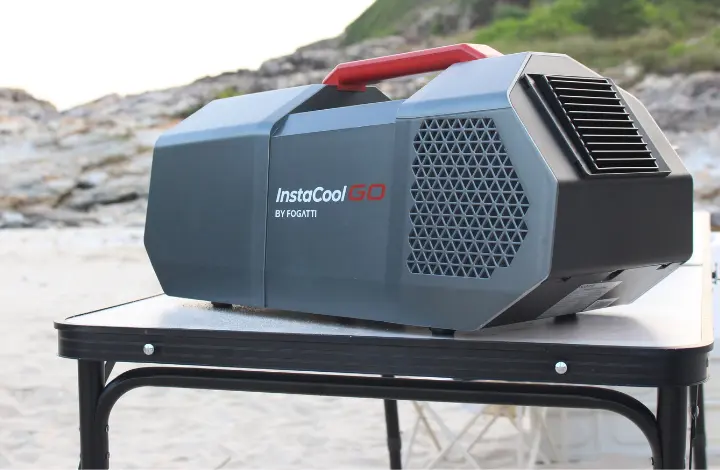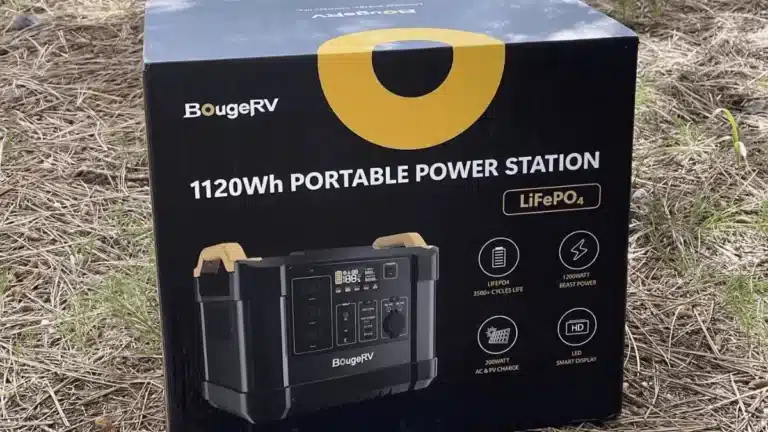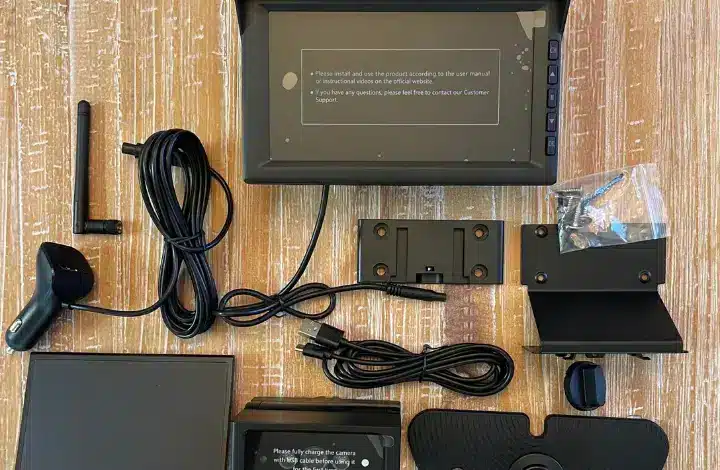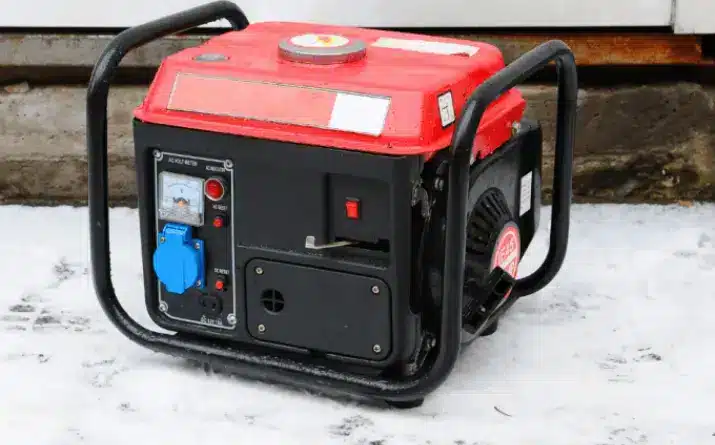TREKKN Review: Fogatti Instacool Go Portable Air Conditioner
As a full-time RVer who chases year-round warm temperatures and travels with two dogs, I’m very wary of letting my RV get too hot indoors. Before I hit the road, I read horror stories of failed AC units or power outages that left dogs in real peril, and I have since taken every precaution to keep my RV carefully temperature-monitored and controlled.
But the problem with RV air conditioners is that they consume a lot of power. Even with a rooftop full of solar panels and a healthy bank of lithium batteries, most of us will struggle to run the AC for more than an hour or two on uncomfortably warm days without a generator.
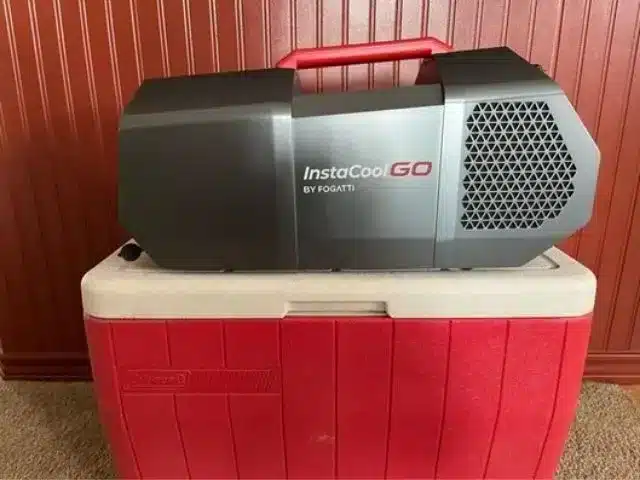
For those times when you’re not plugged into shore power, a portable air conditioner like the Fogatti Instacool Go Portable is an appealing option. It’s designed to be used in tents, but who says we can’t use it to up the safety factor in our RVs as well?
Disclaimer: We received a promotional sample of the air conditioner in order to test and provide an honest review of this product. This review is the honest opinion of the author after using and evaluating the product.
Highlights of Fogatti Instacool Go Portable Air Conditioner
Before I dig into the details, here are a few things to love about this portable AC unit by Fogatti:
Review of Fogatti Portable Air Conditioner
Nearly Ready to Use Right Out of the Box
Right out of the gate, I loved that this unit came mostly assembled. I always find in-box instructions somewhat lacking, but they really weren’t necessary for this unit because the important stuff is already put together in the box.

Lightweight and Great for Travel
I weighed this unit at 20 pounds, which is nice and lightweight for travel—though not quite as lightweight as the 15 pounds advertised.
In addition to the unit itself, the box includes:
- duct connector
- cold air extension tube connector
- drain hose
- 3 expandable ducts
- power adapter and cord
- remote control
Product Tour and First Impressions
The beeping of the buttons on devices like this one can get annoyingly loud, but I was pleasantly surprised at the Fogatti, which beeps at a pleasantly low decibel. The device has four buttons: power on/off, temperature up, temperature down, and fan speed.
BUTTON CONTROLS
However, the buttons are a bit finicky. If you’re trying to move way up or down in your temperature setting, you can’t just push and hold the button down, as it’s really more of a touch sensor. Instead, you must separately press the up or down button each time, which can get annoying if you’re adjusting by more than a few degrees.
When we contacted Fogatti about this, they were quick to respond, which may indicate good customer service. They designed the temperature settings in this way to give users more control when adjusting the unit to the desired temperature. It’s worth noting here so you can decide if that part of the design is a good fit for you.
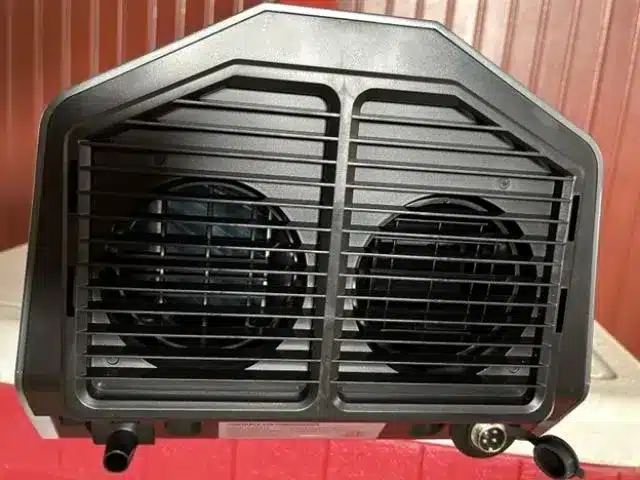
FAN SPEEDS
There are three fan speeds on the unit. While the owner’s manual suggests that you can operate the cooling function and the fan together, this didn’t seem to be the case. From what I could tell, the unit has a separate fan-only setting, and the fan speeds seemed to blow only non-cooled air.
TEMPERATURE SETTINGS
You can set temperatures as low as 61 degrees Fahrenheit or as high as 88F. According to the owner’s manual, this portable air conditioner will operate in temperatures up to 111 degrees F, though I sincerely hope no one ever has to test that upper limit.

EFFECTIVE COOLING: GREAT UNIT FOR TENT OR RV
Once you start it, it takes a minute for the air to cool, but the cooling effect is noticeable. I have no doubt this little unit could cool down the inside of a tent or small RV pretty effectively.
Again, I was pleasantly surprised by the lack of noise. Unlike many RV air conditioners, this unit is nice and quiet. It sounded to me like a medium-sized box fan was running in the room.
POWERING OFF
When powering the AC unit off, you have to hold down the power button for a few seconds. This was finicky, too; I had to wait until just the right point in the cycle to shut it down.
Once off, the fan keeps blowing for 30 seconds or so, and you’ll need to wait until it shuts off completely before you can turn it back on again. The numeric display shows the temperature set point when you adjust up or down. It then displays the ambient air temperature near the unit when you’re not engaged with it.
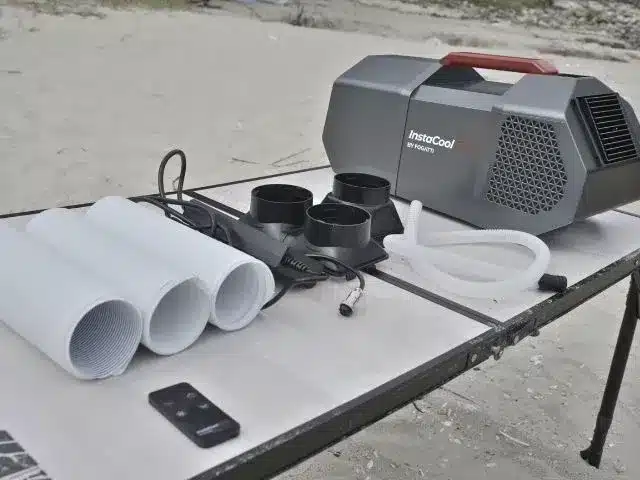
Fogatti Portable A/C Accessories
I haven’t yet made much use of the remote except to note that it works the same way as the buttons on the unit.

DESIGNED WELL FOR TENT CAMPING
It would be really nice if you were using this portable air conditioner in a tent, because you wouldn’t have to unzip the panels to adjust the temperature or fan speed.
If you’re using this unit in a tent, the ducts (which screw into the connectors counter-clockwise) will come in handy by funneling cold air in your desired direction and ushering the hot air outside. The drain tube ensures that condensation doesn’t stay in your tent if you’re running it inside.
The instructions say to elevate the unit slightly for proper drainage, so for indoor operation I kept it on a cooler with the drain tube running down into a bucket. In dry Colorado conditions, I had no condensation to speak of after about 30 minutes of operation.
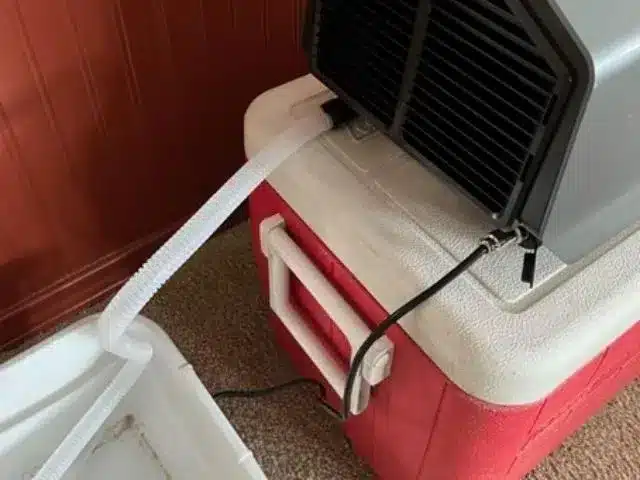
Other General Notes for Fogatti Instacool Go
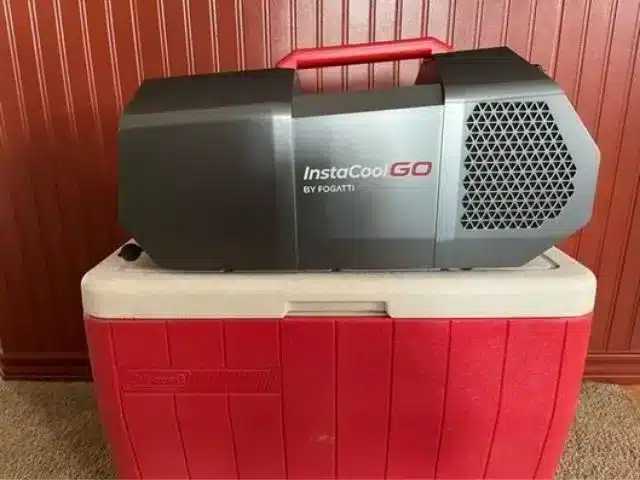
Conclusion
Overall, this is a handy little unit that I would totally bring with me on a weekend car camping adventure. Though I’d be sure to lock it in the car when I wasn’t at camp, as this little unit could easily “walk away” while you weren’t looking.
It’s not a bad backup for RV A/C, either. While the operation can be a bit finicky, it still blows out cold air—and on a hot day, what more can you really ask for?

Sarah Kuiken has been a full-time solo traveler for 4 years and counting, but she’s been a solo adventurer for decades. She owns her own copywriting business, Flourish Writing, which she operates from the road. Sarah loves to explore state and national parks with her two dogs, Orion and Piper—wherever they’re allowed, of course. When she’s not whipping up web copy for fellow entrepreneurs, she’s probably out hiking or paddle boarding with the dogs in tow. Learn more about her freelance writing business at FlourishWriting.com.


